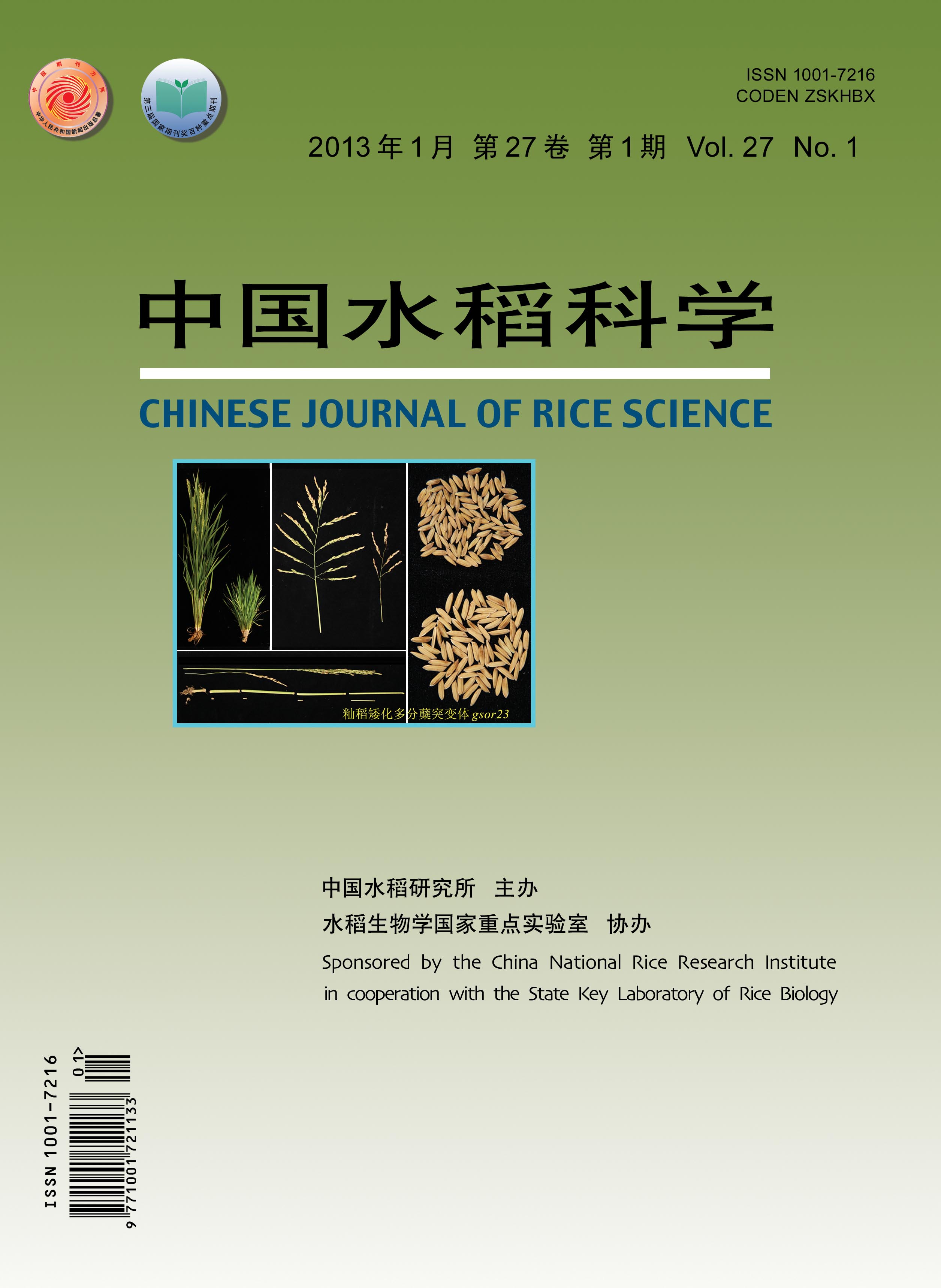|
|
QTL Detection for Leaf Morphology of Rice Using Chromosome Segment Substitution Lines
ZHOU Lihui, ZHAO Chunfang, ZHAO Ling, ZHANG Yadong, ZHU Zhen, CHEN Tao, ZHAO Qingyong, YAO Shu, YU Xin, WANG Cailin*
2013, 27(1):
26-34.
DOI: 10.3969/j.issn.10017216.2013.01.004
The morphological characteristic is one of profitable targets in rice promotion of plant type and yield. A population of chromosome segment substitution lines (CSSLs) derived from backcross between indica recipient 9311 and japonica donar Nipponbare was employed to map quantitative trait loci for the top three leaf size (i.e., leaf length, width and area) and main panicle yield (i.e., spikelet number of main panicle, 1000grain weight of main panicle, seed setting rate of main panicle, main panicle weight), and analyzed their correlation between leaf and yield traits. Correlation analysis revealed that there were significant correlation among traits of leaf size in CSSLs population. Traits of leaf morphology were significantly positively correlated with main panicle weight. Most of traits of leaf morphology had no correlation with seed setting rate, 1000grain weight. A total of 20 QTLs for the top three leaf size were located at 10 regions on 7 chromosomes except for chromosomes 2, 7, 8, 10 and 12 in two years, with explained phenotypic variations ranging from 3.82% to 14.61% and that of six ones were above 10%. Various QTLs were distributed in cluster, and three QTLs were detected in both two years. Furthermore, eight QTLs were novel QTL, comparing with the other mapping results. A total of 16 QTLs for the traits of main panicle yield were detected at 13 regions on 7 chromosomes of 1, 2, 3, 5, 7, 8 and 10 in two years, and 5 regions were in common with QTLs of leaf morphology and yield.
|

